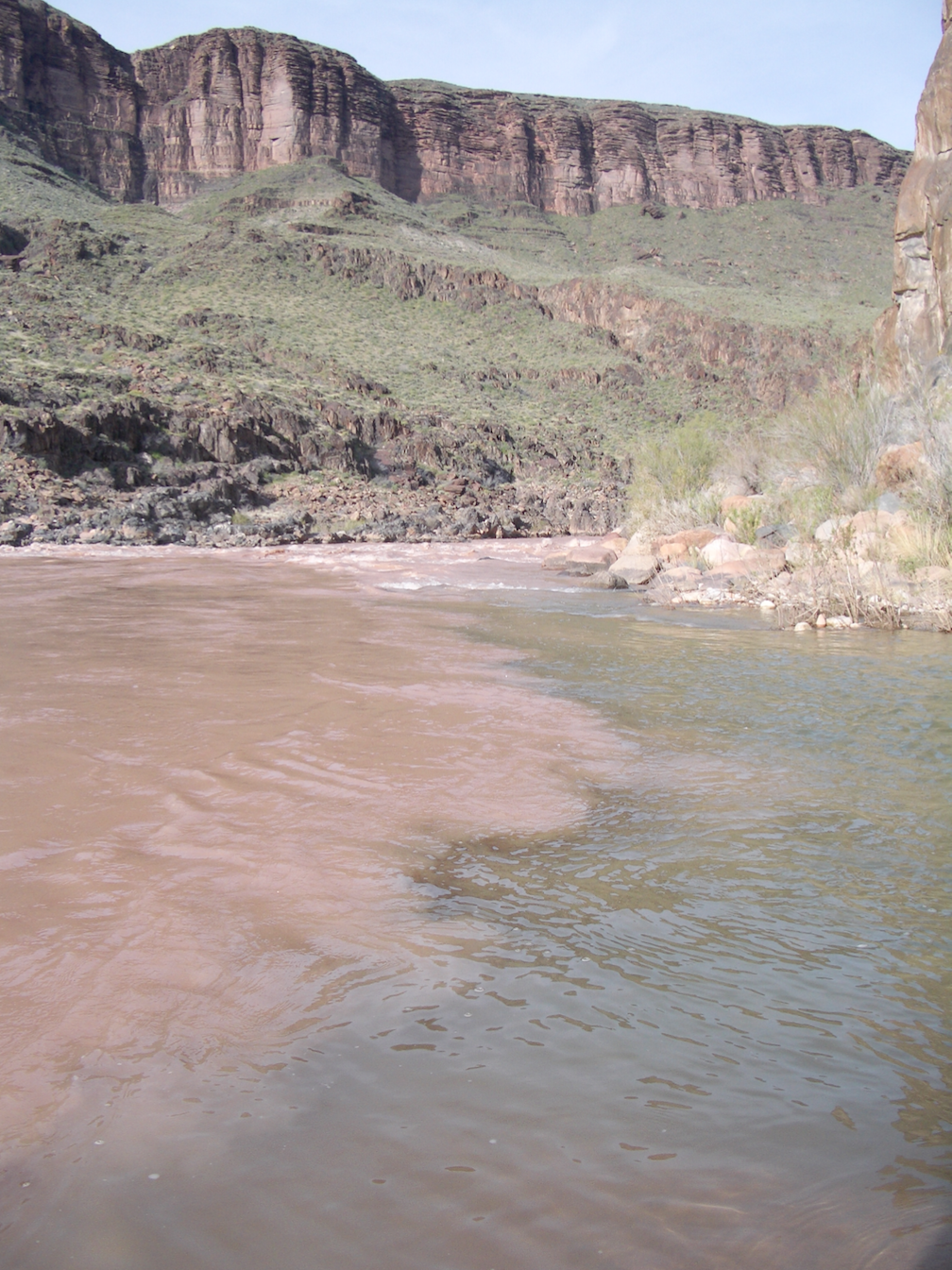During a snorkel survey of Shinumo Creek at river mile 109 to evaluate the quality of habitat and conduct a fish count, bedload was observed being transported along the bottom of the channel. Bedload is the part of the sediment transported by a river that moves along or just above the riverbed. Bedload tends to be too heavy to stay in suspension for very long and thus stays close to the bottom of the river channel (Booth, 2005). The size of the bedload ranged from coarse sand to medium gravel (2-15 mm). The mobility of the bed suggested that the discharge was too strong to accommodate fish given the absence of refugia in the bedrock-walled channel. However, anecdotal evidence from our river guides suggests the presence of trout in this system. Invertebrate sampling near the mouth of the tributary found high diversity but low biomass reinforcing the idea that velocities were too high for organisms to be present. In this system, high diversity and lack of aquatic invertebrate biomass suggest a disturbed environment.
Based on conversations with our guides, during this time of year, the river usually has a high suspended sediment concentration. However, even with this unusually wet winter, Chinumo was running clear with little suspended sediment load. Almost all sediment transported was within the bedload layer. Based on the fact that we did not investigate further upstream, it was difficult to ascertain a reason why this unusual behavior was occurring. It is possible that a storm may have already sent a pulse of fine sediment through the watershed and we were observing the falling limb of the storm hydrograph. It is also possible that the higher flows were just from snowmelt which would not be erosive enough to cause a high suspended sediment concentration.
The modes of bedload transport were saltation, rolling, and sliding. Saltation occurs when the particle “jumps” at irregular intervals and is a very discontinuous process as the particle becomes lodged next to other particles. Rolling and sliding is slightly less irregular than saltation but is still strongly influenced by the local hydraulics and interactions with neighboring particles. Mass failure and sheet movement were also observed with the sand-sized particles. Particle sizes ranged from coarse sand to medium gravel (2-15 mm) with saltation common with smaller gravel and rolling and sliding common with rolling and sliding of larger particles.


LITERATURE CITED
Booth, E.G. 2005. "Sediment Response to Construction and Recent Adaptive Management of Glen Canyon Dam, Colorado River, Arizona." In. J. Mount, P. Moyle and C. Hammersmark (eds.). Ecogeomorphology of the Grand Canyon and its Tributary Streams. Davis, CA.
